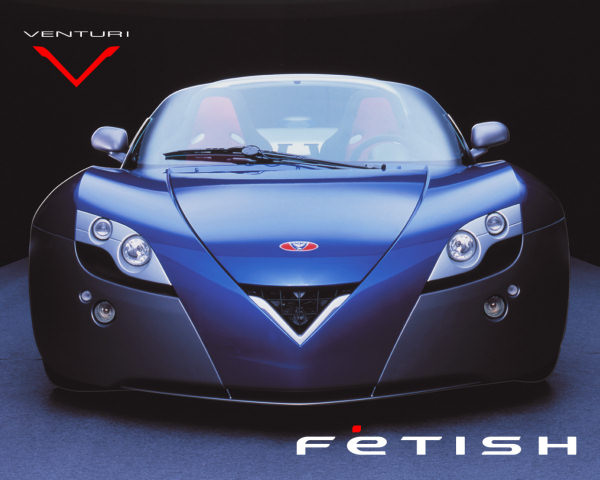 The Venturi Fétish is the world's first[citation needed] production two-seater electric sports car. It is produced by Venturi in Monaco, and the futuristic design of the car was done by the Parisian designers Sacha Lakic. The Fétish was first introduced in concept form at the 2002 Salon International de l'Auto (International Geneva Motor Show). It will remain an absolute rarity, since the manufacturer is committed to deliver only 10 vehicles worldwide per year. The waiting time for the Fétish is 24 months and production started in 2005 with plans to end 2015, this is when the Fétish 2 is expected to hit the roads. The retail price for this car has dropped to €300,000 as of May 2007 (approx. US$400,000), VAT not included. Sales data is now available, but it is unclear if any have shipped to customers yet, estimates say Venturi has shipped 30.
The Venturi Fétish is the world's first[citation needed] production two-seater electric sports car. It is produced by Venturi in Monaco, and the futuristic design of the car was done by the Parisian designers Sacha Lakic. The Fétish was first introduced in concept form at the 2002 Salon International de l'Auto (International Geneva Motor Show). It will remain an absolute rarity, since the manufacturer is committed to deliver only 10 vehicles worldwide per year. The waiting time for the Fétish is 24 months and production started in 2005 with plans to end 2015, this is when the Fétish 2 is expected to hit the roads. The retail price for this car has dropped to €300,000 as of May 2007 (approx. US$400,000), VAT not included. Sales data is now available, but it is unclear if any have shipped to customers yet, estimates say Venturi has shipped 30.
The car's acceleration is comparable to a normal internal combustion engined sports car, producing approximately 250 horsepower (180 kW), with a 0-100 km/h (0-60 mph) time of "under 4 seconds" according to the 2007 press kit. Its top speed is less comparable however, at 160 km/h (100 mph). It runs at a constant translation of 9.58 : 1, with a torque of 220 N·m (162 lb·ft).
One other particular attraction of the car is that due to the electric traction motor, the full 220 N·m (162 lb·ft) torque is available at all motor speeds including from a dead stop, as opposed to the progressive delivery of an internal combustion engined car, where maximum torque is only available within certain RPM ranges.

The company specifies the car with a range of 250 km (combined use). The batteries are all lithium ion accumulators, offering a complete recharge in 1 hour (under 30 kW three-phase) and in 3 hours with a standard grid thanks to its onboard charger.




0 komentar:
Posting Komentar